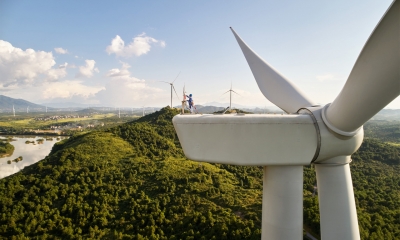Vishal Gulati Gloucester, November 19, : , With over three quarters of British land in agriculture, the country is helping to accelerate the transition from fossil fuels and clean energy.
The UK has around 19,000 farms, and is highly dependent on natural gas.With solar and wind power being cheaper than fossil fuels, there’s huge opportunity.
The power sector is responsible for 25% of the global greenhouse gas emissions.40% of UK farmers use the sun, wind, and farm byproducts to generate low-carbon electricity, despite the implications of Brexit and Covid-19.
Solar Photovoltaic and biomass for heat generation are the most popular renewable technology options on farms.
Official estimates suggest that the UK gets at least 10% of its electricity from energy generated in rural areas.
Harjit Singh Gill is an Indian-origin who lives in Birdwood, Gloucestershire, in a farm house.
This rural location is famous for its historical warehouses, which are proud guardians of Britain’s largest inland port.
We have made the decision to shift away from burning fossil fuels in order to meet government’s low-carbon heating system goals.
Three-time Mayor of Gloucester Gill told IANS that we have chosen low-carbon heat pumps powered by electricity to replace our oil-fired heating systems.
According to the UK’s December 2020 energy whitepaper, the government states that new heating installations will be carbon-neutral by 2030.
It has developed a 3-year program to provide grants of 5,000 pounds to 90,000 homes to install low-carbon heating systems.
This grant is one of a total of 3.9 billion pounds of funding to low-emission homes.It also includes grants for the replacement of old gas boilers by cleaner technology.
UK plans to eliminate the use of fossil fuel boilers that mainly burn natural gas by 2035, and instead replace them with lower-carbon options.This is part of the UK’s national plan to improve its heating and power systems in order to reach the zero net target by 2050.
Gill moved from India to England at 23 years old.He was elected as the first Asian mayor of Gloucester in 2007.
He said that heating oil prices in Britain are on the rise and some suppliers had already warned of rate increases in the future.”We have chosen to go clean power, despite high initial installation costs,” adding, “This technology will benefit households by saving money in energy bills.”
Many farmers use the sunlight, wind, farm products, and energy crops in the area of the farm to generate clean, low-carbon electricity.
Philip Berg, a potato grower, told IANS that he had installed two solar photovoltaic systems and an energy management system in order to lower the energy consumption of potato chillers.
He adds: “By using 60-65 per cent of the electricity generated from my systems, I am securing annual income and consume less fossil fuel — saving huge energy costs, besides a more efficient and environmentally-friendly estate.”
25% of all global greenhouse gas emissions are caused by the electricity sector.
Experts believe that the surge in solar farms is due to the end of subsidies for agriculture.This will be completed by the UK’s post Brexit plans, which are set to complete 2028.
This is an enormous loss in income for many farmers.According to the UK government, money used for direct payments is being invested in programs that support sustainable agriculture.
A wind turbine generates 162 kWh annually, while solar panels are able to produce 32 kWh each year.Investment in wind turbine is 2,40,000 Pounds and solar, 77,000 Pounds (includes planning and grid connectivity).
In wind, the payback is 6 to 7 years; solar it’s 5 to 6.
The UK produced 75,610 gigawatts (GWh), of electricity in 2020 from offshore and onshore winds.It would power 8.4 Trillion LED lights.
The majority of offshore wind activity occurs in England.Around half the onshore wind activity takes place in Scotland.Yorkshire is home to the largest offshore windfarm in the world.Since 2012, the cost of UK offshore wind fell by over 70%.
In the last five years, more than 1 Billion pounds has been invested in clean energy programmes in developing nations by the UK.
The UK is also accelerating its withdrawal from coal plants with a capacity of 2000GW that are currently in operation.
In 2020, the UK didn’t use any coal-fired power for 5,000 hours.The UK is determined to end coal-fired electricity by 2024.This crucial role plays in limiting the rise in global temperatures to 1.5 degrees.
Boris Johnson, Britain’s Prime Minister announced at the UK presidency climate summit that all electricity in the UK will come from renewable energy sources by 2035.
The UK produced 43.1% of its electricity in 2020 from renewable sources including solar, wind, bioenergy, and hydro.Only 1.8 percent of electricity generated in the UK was from coal, while nuclear power accounted for 16.1 percent.
Vishu Mal Gulati may be reached at [email protected]
vg/khz/
#Britain #zerocarbon #energy







